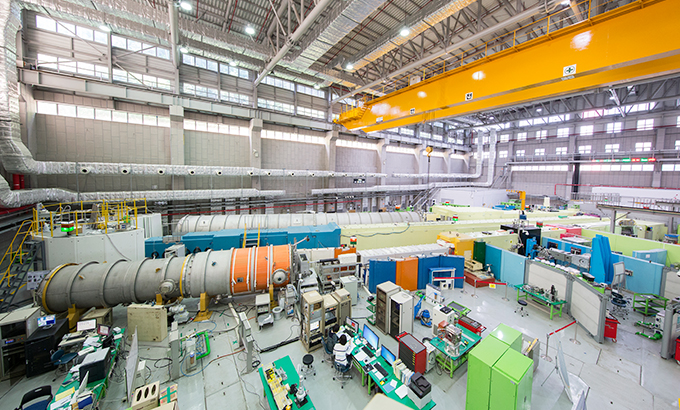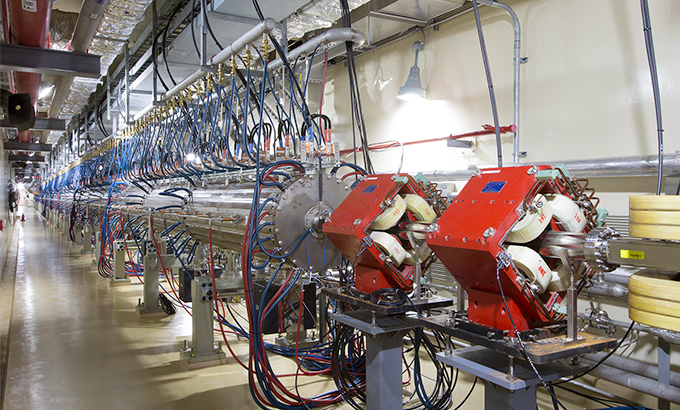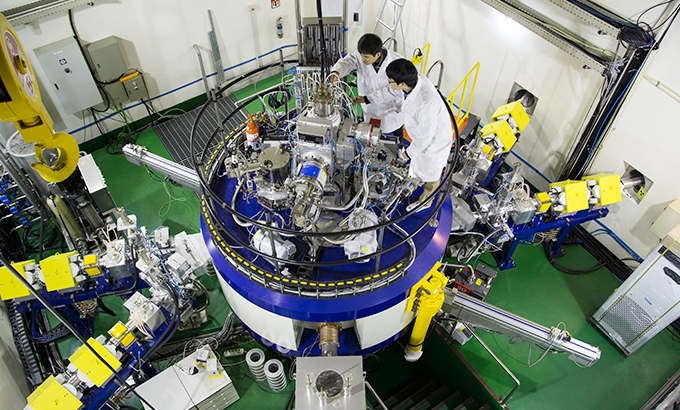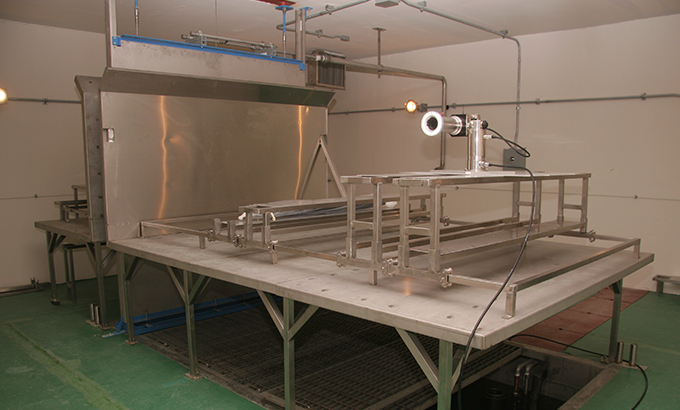Full utilization of nuclear facilities for strengt
-
- Background
- Large-scale facilities are crucial for basic science
-
- Goal
- Stable operation of large-scale nuclear research facilities
-
- Significance
- Meeting the special mission of a government-funded institute by stably providing science communities and companies with government-funded facilities
Promotion Strategy
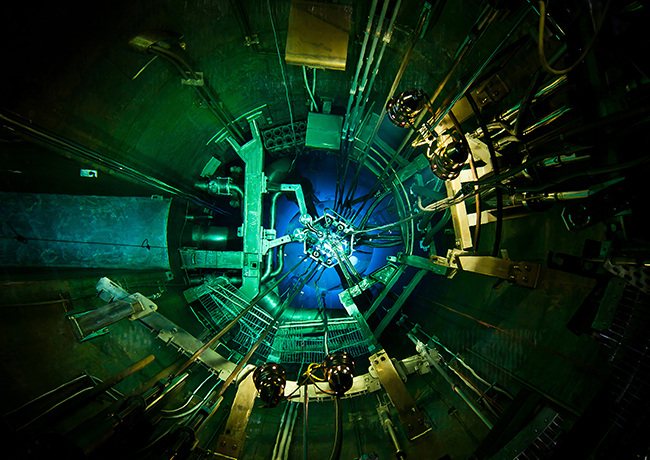
(Goal) Performance enhancement and stable operation of large-scale facilities such as HANARO, proton accelerator, radiation irradiation facility, etc
(Safe operation) Enhancing the safety of nuclear facilities by, for instance, taking actions after the Periodic Safety Review of HANARO
(Stable operation) Operability over 90% of HANARO and proton accelerator, respectively
(Enhancement of performance and Construction of new facilities) Operation of more than 15 neutron scattering instruments, Construction of electron beam facility (year 2018), Construction of proton based Li-8 facility (year 2019), and Construction of supporting facilities for utilizing next-generation synchrotron radiation facility (long-term plan)
(Action plan) Substantiating a unified supporting system for users and developing research projects that would share facilities with other research institutes
- Stable operation of large-scale research facilities such as HANARO
- Safety enhancement of large-scale research facilities
- Performance enhancement of large-scale research facilities
- Promoting for sharing of large-scale research facilities
- Development of technology for simulation and impact assessment of cosmic rays and natural radiations
- Development of technology for the production and utilization of secondary particles such as pulsed neutrons and Li-8
- Development of technologys for precise quantitative analysis using particle beams

